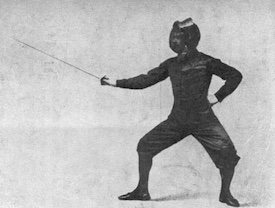I get all that, no problem. But what interests me here isn’t the comparison of the original with the CD output.
What interests me are the differences measured between the CD output with and without the “tweaks”. That was repeatable and consistent across time and environment. That differences were also measured on three different CD players of varying engineering depth would also seem to indicate, combined with repeatability, that the results are unlikely to be down to system self-noise.
My point here is that this article (and it is an article, not a scientific paper) is food for thought for further investigation, isn’t it? It’s (possibly maybe) an example of where measurements might be able to take us in our understanding of the role of power in our hifi systems.
We know noise from household appliances can disrupt or hifi. That’s a given. And those of living in old apartment buildings k ow that what our neighbours do impacts us all day every day. But I’m not at all sure we know how deep that rabbit hole goes. This article seems to start trying to find out.
I’m very happy with what’s proof and what isn’t, but I’m also inquisitive. Theres’s a long way to go.
On ABX and DBT - it doesn’t bear out the effect of long term listening, especially in the domain of the fatigue brought about by excessive electrical noise polluting the system. Like going from a PC or MacBook to a dedicated streamer. I worry that rapid testing under pressure isn’t designed to detect very small differences that only make themselves apparent over longer periods. Much like the quality in video monitors that seem negligible until you have to look at it for hours on end, or the noisy office that your brain filters out but is still there making you concentrate harder are wearing you down.
I don’t think that there’s zero merit to the article, and it has flaws, but isn’t it enough to get interested?
What interests me are the differences measured between the CD output with and without the “tweaks”. That was repeatable and consistent across time and environment. That differences were also measured on three different CD players of varying engineering depth would also seem to indicate, combined with repeatability, that the results are unlikely to be down to system self-noise.
My point here is that this article (and it is an article, not a scientific paper) is food for thought for further investigation, isn’t it? It’s (possibly maybe) an example of where measurements might be able to take us in our understanding of the role of power in our hifi systems.
We know noise from household appliances can disrupt or hifi. That’s a given. And those of living in old apartment buildings k ow that what our neighbours do impacts us all day every day. But I’m not at all sure we know how deep that rabbit hole goes. This article seems to start trying to find out.
I’m very happy with what’s proof and what isn’t, but I’m also inquisitive. Theres’s a long way to go.
On ABX and DBT - it doesn’t bear out the effect of long term listening, especially in the domain of the fatigue brought about by excessive electrical noise polluting the system. Like going from a PC or MacBook to a dedicated streamer. I worry that rapid testing under pressure isn’t designed to detect very small differences that only make themselves apparent over longer periods. Much like the quality in video monitors that seem negligible until you have to look at it for hours on end, or the noisy office that your brain filters out but is still there making you concentrate harder are wearing you down.
I don’t think that there’s zero merit to the article, and it has flaws, but isn’t it enough to get interested?





















